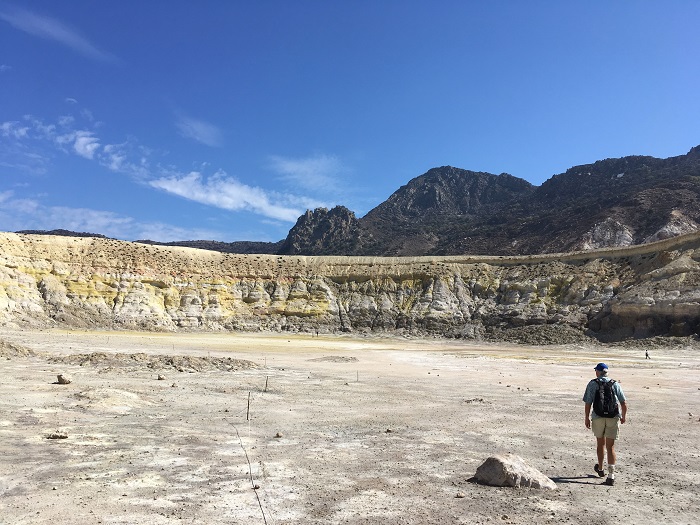
Join Thor and me on a day trip from Kos to hike the steaming caldera of the still-active volcano on the nearby island Nisyros. It’s hot!
NOTE: Since our recent trip to Greece to research more settings for my novel-in-progress, THE ARIADNE DISCONNECT, Thor and I knew we had to return to this magical region. My first entry in this new blog series posted here on Saturday, 10/20/2018. It gives an overview of our rambles from Athens to seven islands in the Dodecanese and Cyclades groups, ending our ferry-hopping pilgrimage on the anciently sacred island of Delos.
Since my novel-in-progress involves more earthquake and volcanic instability in near-future Greece, I needed boots on the ground to describe the desolate landscape of a caldera. (Yes, boots: Visitors are advised to wear sturdy footwear, not sandals, as the ground is still hot and unstable.) Nisyros is part of the Aegean volcanic line that also passes through famous Santorini, which we visited the previous year. So Thor and I headed for an excursion boat leaving from the south coast port of Kardamena. I took it as a good omen when I spotted this cafe along the harbor, honoring the ancient Minoan who is the ancestor of my heroine Ariadne:

The only practical way to get to Nisyros and see the caldera was to sign up for a tour group, so we set off in a boat full of other tourists speaking various languages.
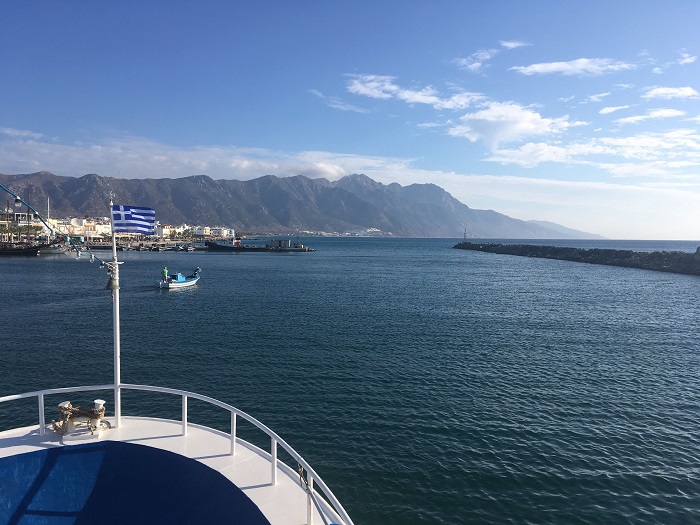
It was a lovely morning to enjoy the salty breeze and that deep purple-blue sea.
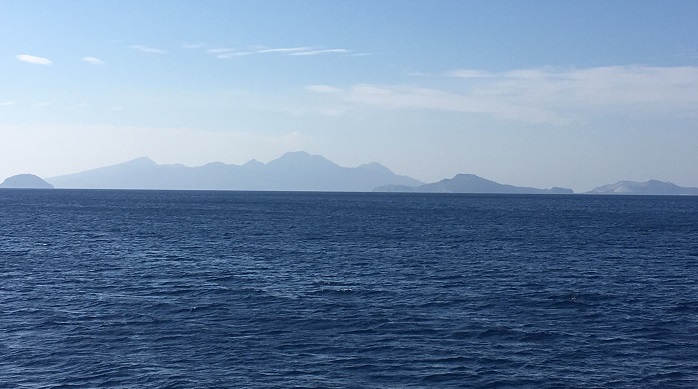
We passed close to tiny Gyali, another volcanic island, where perlite and pumice mining provides the biggest economic boost to the municipality that includes Nisyros and several small islets. Gyali has a population of 21, and Nisyros about 1,000, not counting the few tourists who stay overnight.
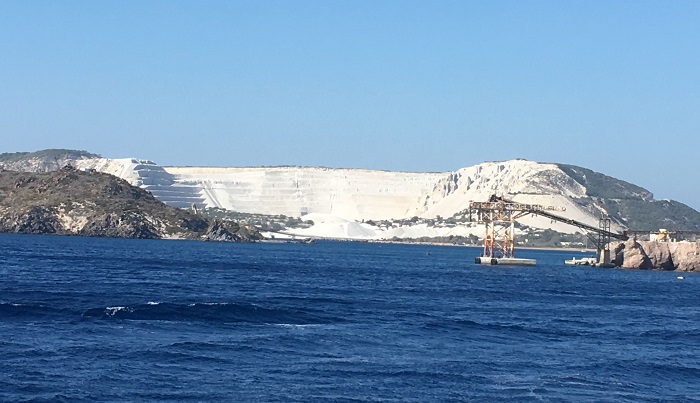
We landed at Mandraki, the biggest settlement on Nisyros, a charming village that we’ll explore in next week’s blog post.
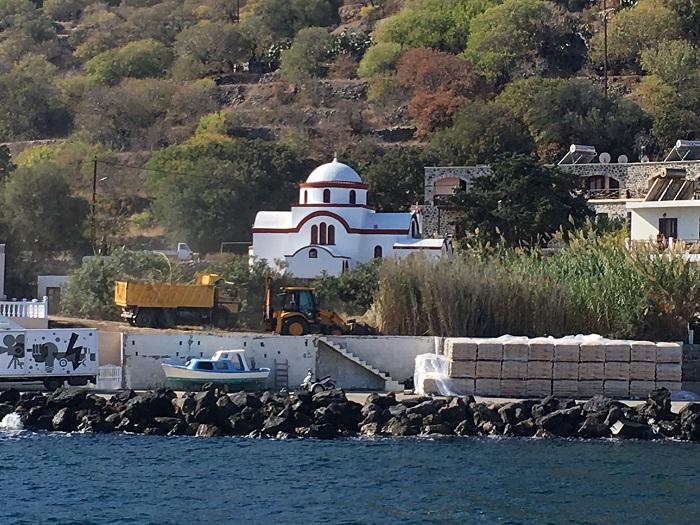
As you can see, the unusually windy weather and choppy waves continued after the passage of Cyclone Zorba earlier in our trip.
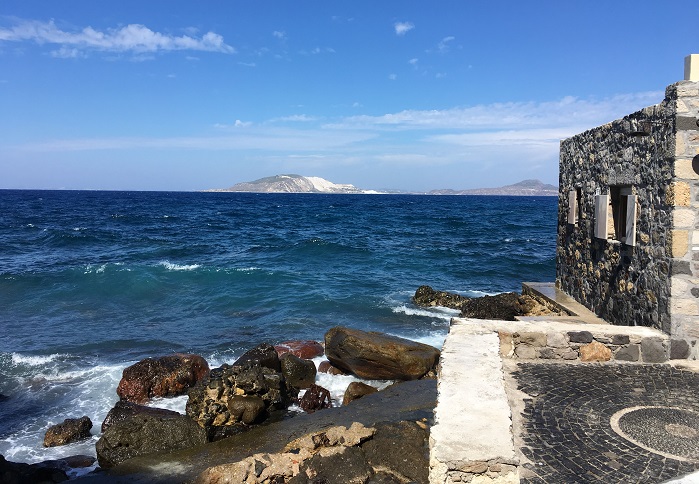
After the tour guides separated the German speakers (there are always a lot of German tourists in Greece) and herded them onto their own bus, the rest of us mixed lot boarded our bus for yet another hair-raising drive up the steep switchbacks of the volcano’s flanks.
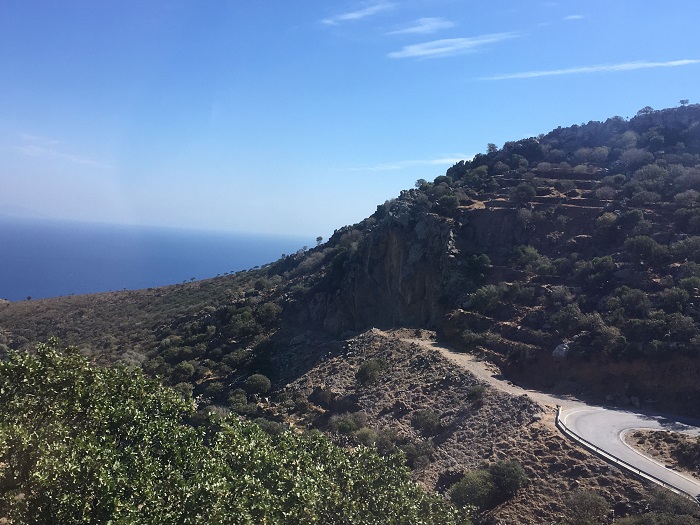
The mountain originally stood at about 850 meters tall, but a huge explosion around 25,000 years ago blew off the top 100 meters and collapsed the center, creating a huge caldera. Ancient settlers built thousands of rock terraces along the steep slopes to plant fruit, nut, and olive trees in the fertile soil. Most of the small settlements are now abandoned.
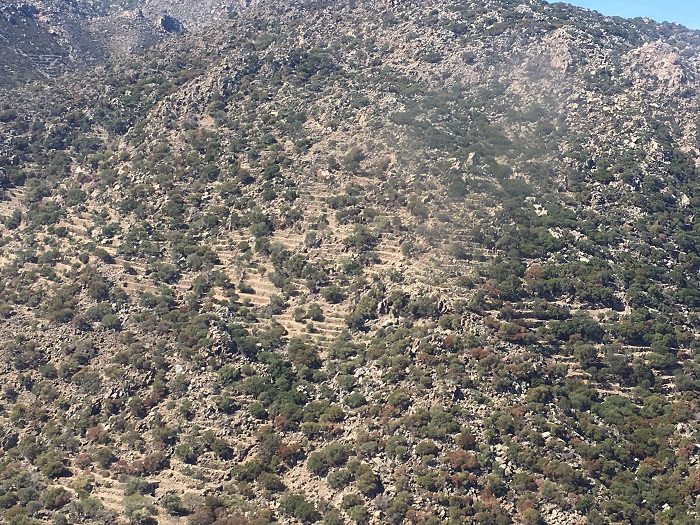
The volcano is still active, with the latest period of significant “seismic unrest” in the 1990s, when they installed earthquake sensors. Steam explosions in the 1800s created ash domes inside the caldera, one seen below to the middle right. In the distance is the still-steaming crater we will explore.
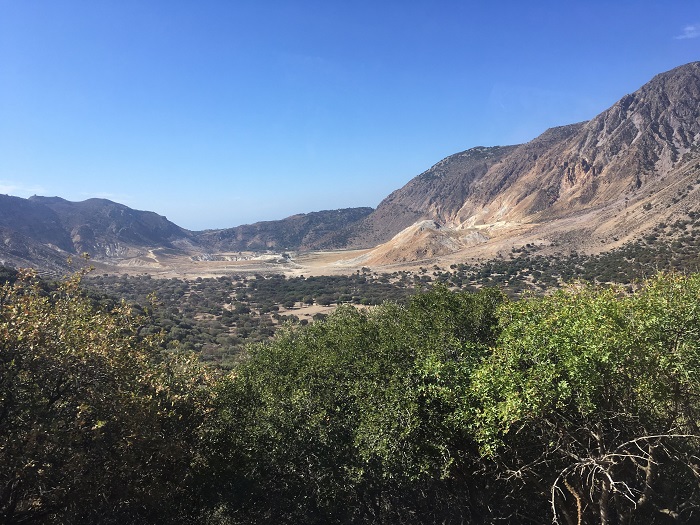
I’m ready to hike down into the Stefanos crater. The locals call the mountain Polyvotis: According to mythology, the island was formed when the enraged Poseidon (he always seems to be angry at someone) threw a chunk of Kos onto the warring giant Polyvotis. The giant was trapped beneath it, fiery and fuming, the eruptions his furious bellows. Let’s hope he’s napping now!
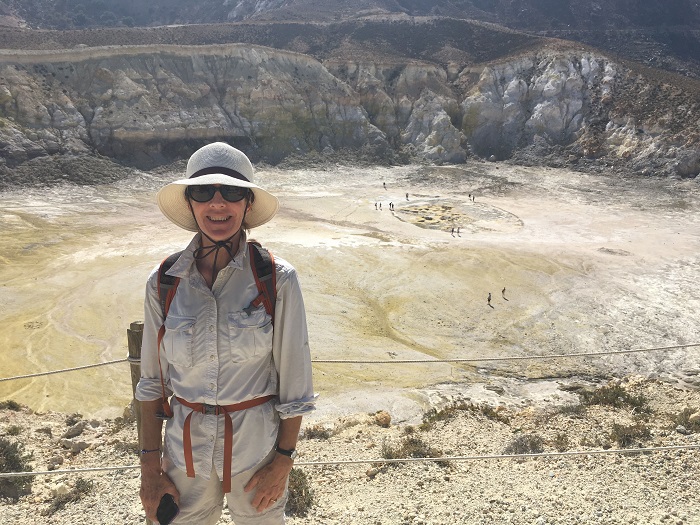
The crater rim is streaked with yellow sulfur deposits that also pave the hot floor. The circular areas containing active fumaroles are roped off to protect hikers from breaking through the thin crust into the 208 degree F, bubbling liquids.
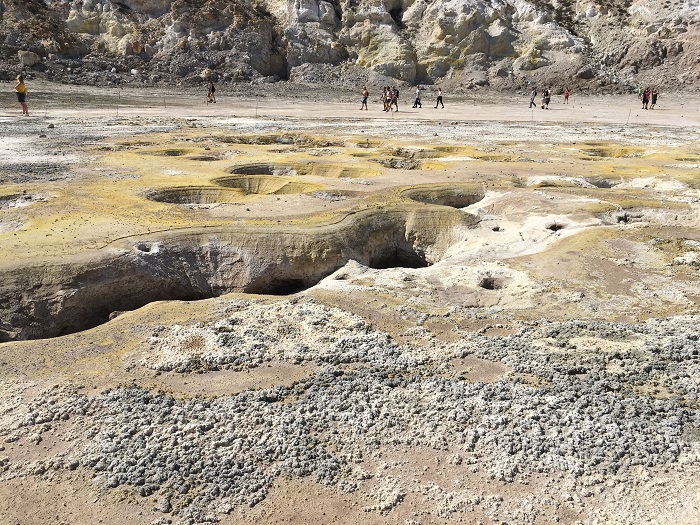
There are small sulfur crystals everywhere.
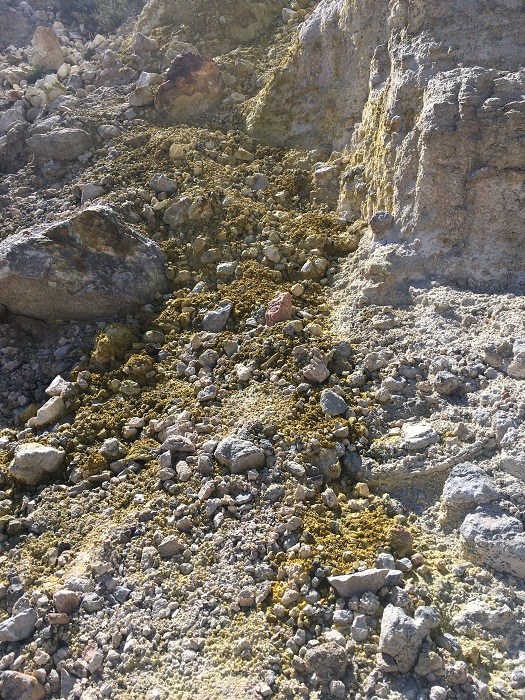
Thor the geologist in his element! Though he had to admit he wasn’t a big fan of the heat and the sulfur stench from the steam vents. As he put it, “It’s one of those places you enjoy having been to more than actually being there.” Since we live close to active volcano Mt. Baker in the Cascade Range of the Pacific Northwest, we’re used to seeing steam plumes from “sleeping” volcanoes. Still, we could have the Big One at any time now….
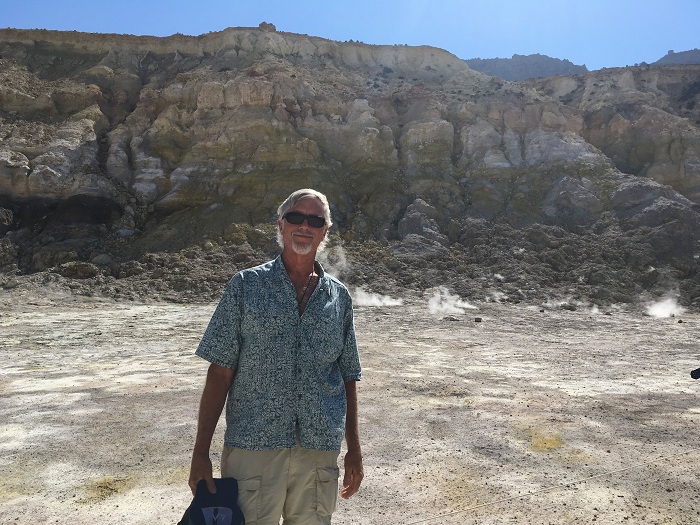
Next week: Cool off with us as we wander the shady lanes of the village below the volcano, guarded by a Medieval castle and monastery.
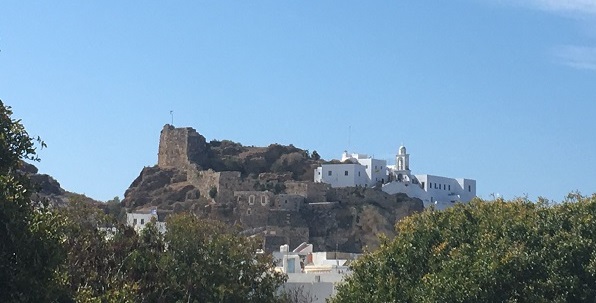
*****
You will find The Rambling Writer’s blog posts here every Saturday. Sara’s latest novel from Book View Cafe is available in print and ebook: The Ariadne Connection. It’s a near-future thriller set in the Greek islands. “Technology triggers a deadly new plague. Can a healer find the cure?” The novel has received the Chanticleer Global Thriller Grand Prize and the Cygnus Award for Speculative Fiction. Sara has recently returned from another research trip in Greece and is back at work on the sequel, The Ariadne Disconnect. Sign up for her quarterly email newsletter at www.sarastamey.com

1 thought on “The Rambling Writer Explores More Greek Islands: Volcanic Nisyros”